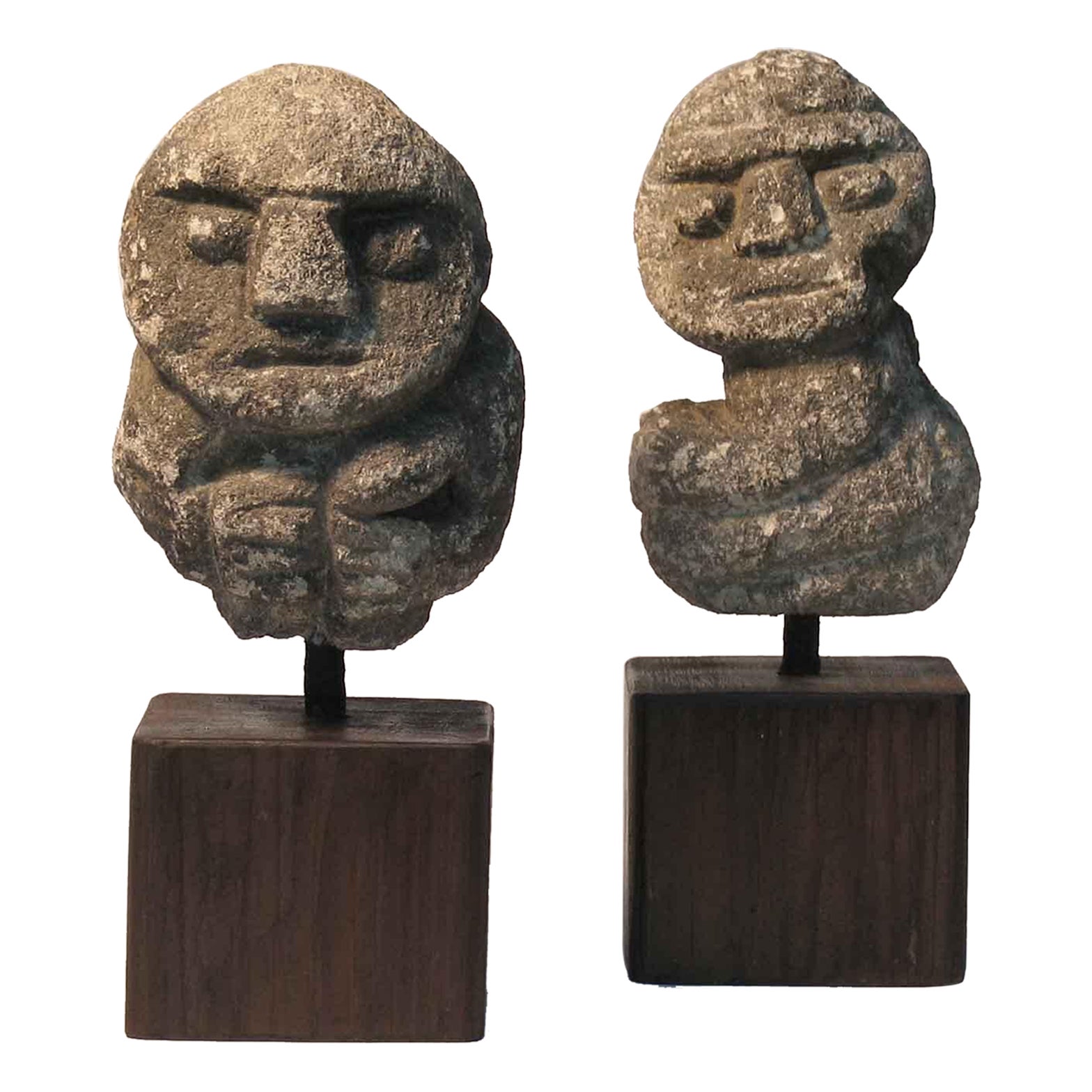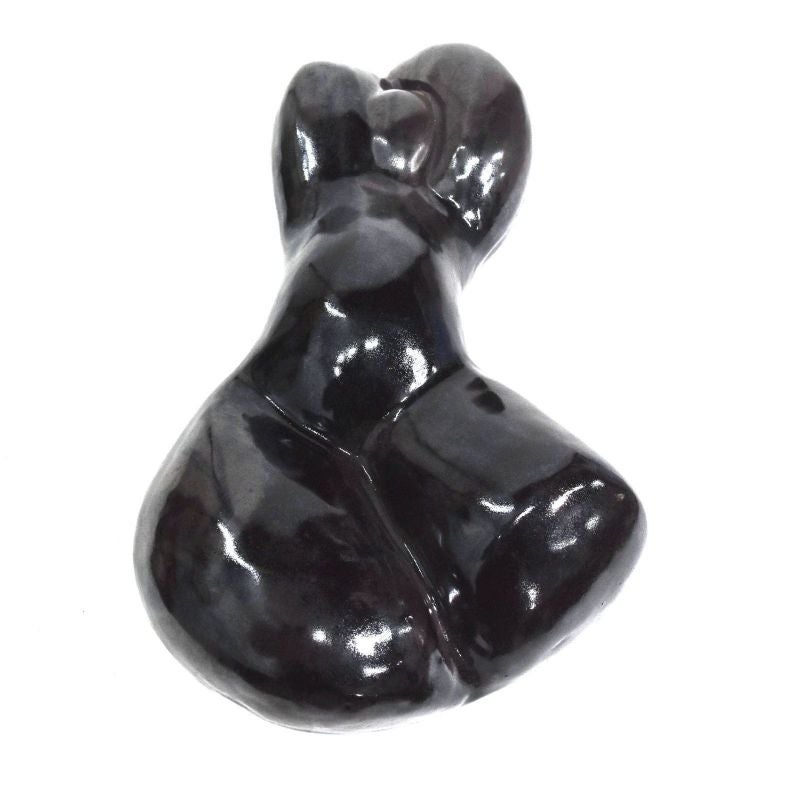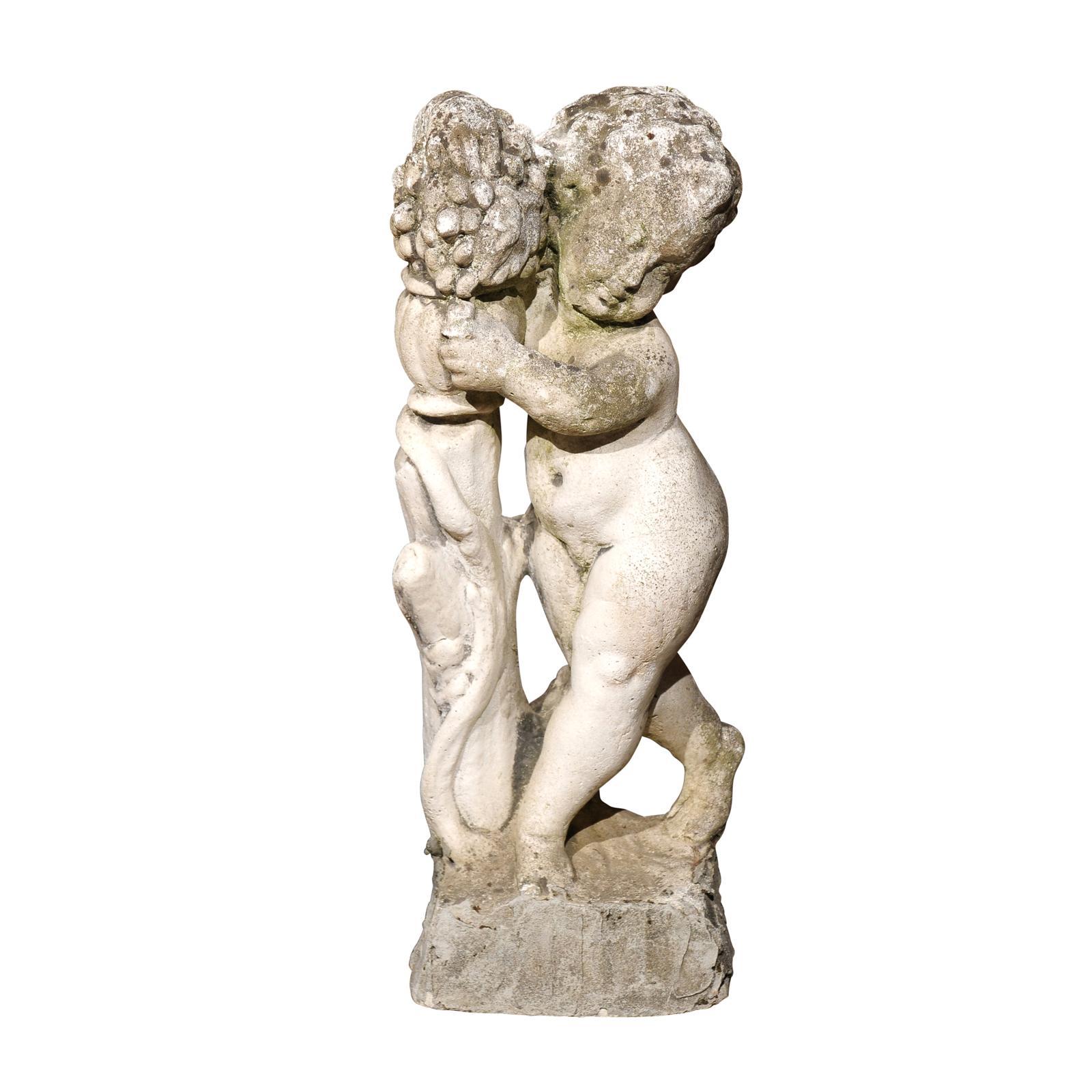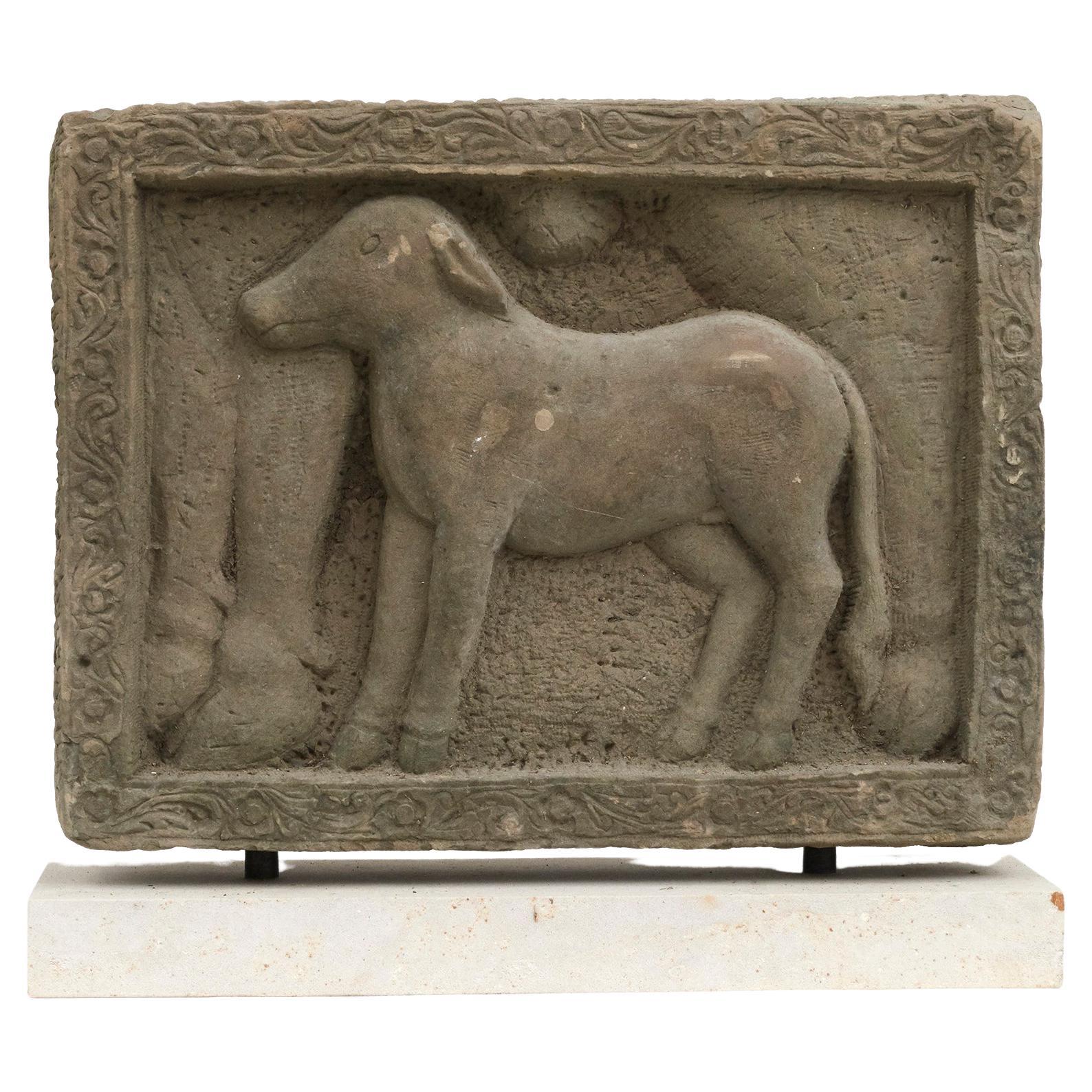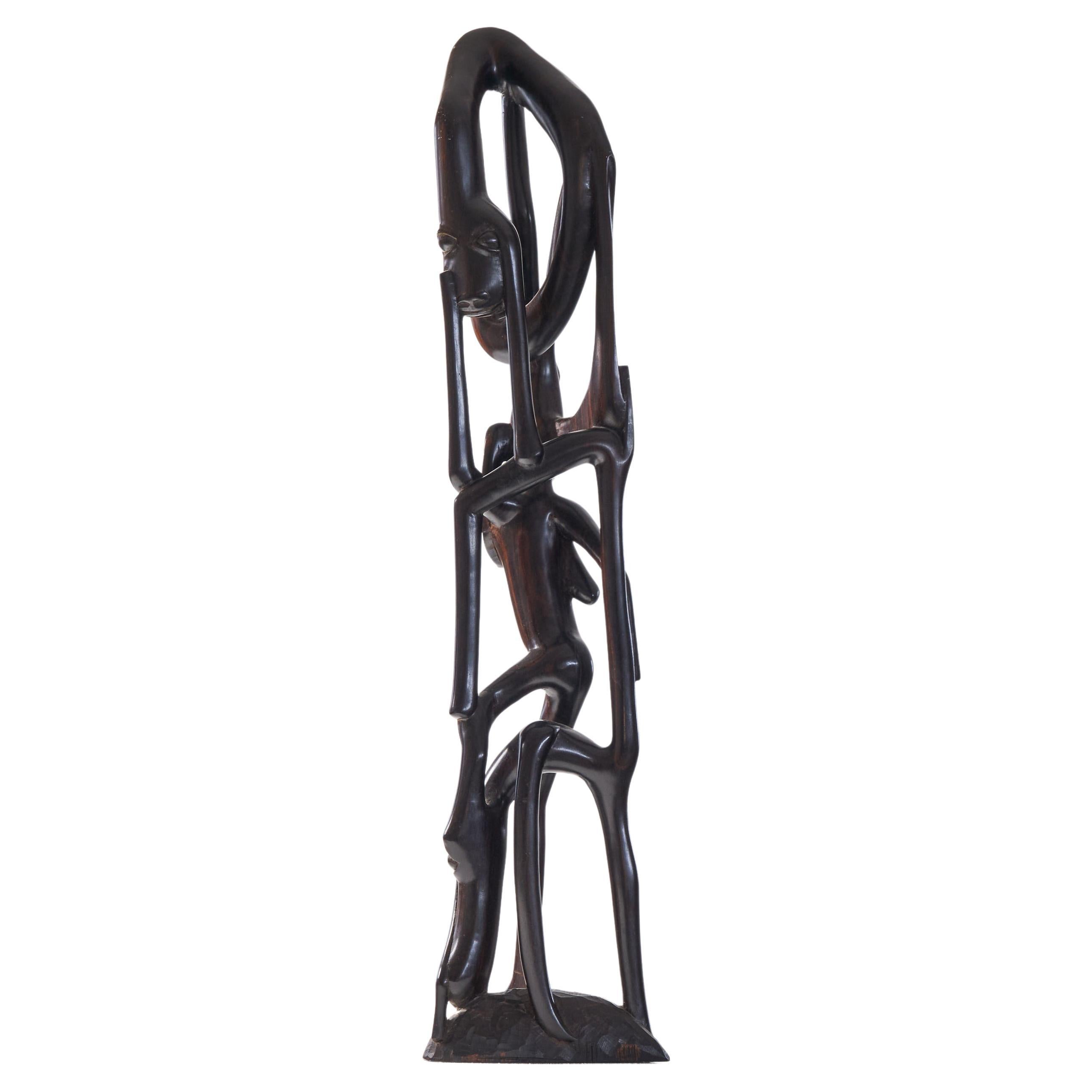Items Similar to Stone Carved Anthropomorphic Sculpture From The Recuay Culture Peru 400bc-400ac
Want more images or videos?
Request additional images or videos from the seller
1 of 14
Stone Carved Anthropomorphic Sculpture From The Recuay Culture Peru 400bc-400ac
About the Item
ANTHROPOMORPHIC SCULPTURE CARVED IN STONE OF THE RECUAY CULTURE PERU 400BC-400AC
Recuay is an archaeological culture of Ancient Peru that developed in the Sierra of the current Peruvian department of Áncash between 200 AD. C. until 600 d. C. It corresponds to the stage called Regional Developments, it has also been called the Huaylas or Santa culture.
Like the other Early Intermediate cultures, little is known about this culture. The most accepted position is that it was an extension of the Chavin culture, after the influence of the "White on Red" style in the region. Regarding the political aspect of the recuay, there is a hypothesis that questions their autonomy and maintains that Recuay would be part of one of the many political units that made up the Moche state.
The recuay style, characterized by its ceramics and stone sculpture, was initially described by Eduard Seler in 1893, based on ceramic specimens brought to the Ethnographic Museum in Berlin by Mariano M. Macedo. Seler named this style of pottery Recuay, based on the report that these pieces had been found in the town of Recuay. Later studies showed that this characteristic pottery was not originally from Recuay but from Copa, near Carhuaz, for which reason the name change to that of this town was proposed. Eventually the name of Huaylas was used for this culture. In 1919 Julio C. Tello explored the area and recovered lithic sculptures and Recuay-type ceramics. In the 1960s Rafael Larco Hoyle proposed changing the names of Recuay and Copa to Santa, arguing that the Recuay style had originated in the coastal regions of the Santa Valley. However, the name Recuay has persisted.
Its chronology is also highly debatable. The time of its origin between 0 and 200 AD is discussed. C. and its end or collapse is commonly set to 600 d. C. probably caused by the invasion of the Huari conquerors.
It encompassed almost the entire Callejón de Huaylas, a narrow valley fed by the Santa River and enclosed between two mountain ranges, the Cordillera Blanca to the west and the Cordillera Negra to the east. Its influence extended to the east to the Marañón river basin and to the west to the upper parts of the Santa, Casma and Huarmey valleys. To the north it reached the town of Pashash, in the province of Pallasca.
The Copa area, Marca district, Recuay province, Ancash department seems to have been the center or main nucleus of cohesion of this culture. The name of the culture would then be justified, derived from the province of the same name. Other important settlements were those of Huilcahuaín (near the current city of Ancash), Cátac, Araucay, Tambo, Jancu, Upayacu and Pashash (near the current city of Cabana).
Its main form of expression of art was through stone work (carving and masonry), inherited from its predecessor, the Chavín culture. In addition, they made sculptures in lumps that represent warriors with shields or trophy heads, with which they decorated their complex architectural constructions. They also made white clay pottery in a wide variety of shapes and a textile that reproduced the designs of the pottery.
Title: Chair of power.
Object: Ceremonial chair carved in stone, with a U-shaped seat, supported by a crouching ZOOMORPHIC figure.
Typology: Lithic sculpture.
Culture: Manteña (Manabi, Ecuador).
Dimensions: 37X26X28CM
Technique: Carving on stone block
Provenance: Collection Dr. Professor: Udo Oberem
(1923-1986)
On November 24, 1986, Udo Oberem died suddenly and unexpectedly in Bonn, just before his 63rd birthday. The deceased was a number professor of ethnology — with special regard for
Americanist studies („Alt-Amerikanistik") - at the Faculty of Philosophy of the University of Bonn and director of the Institute of Anthropology
Cultural.
- Dimensions:Height: 14.57 in (37 cm)Width: 10.24 in (26 cm)Depth: 11.03 in (28 cm)
- Materials and Techniques:
- Period:
- Date of Manufacture:400
- Condition:
- Seller Location:Madrid, ES
- Reference Number:1stDibs: LU5779235227422
About the Seller
4.9
Platinum Seller
These expertly vetted sellers are 1stDibs' most experienced sellers and are rated highest by our customers.
Established in 2005
1stDibs seller since 2021
221 sales on 1stDibs
Typical response time: 1 hour
- ShippingRetrieving quote...Ships From: Madrid, Spain
- Return PolicyA return for this item may be initiated within 14 days of delivery.
More From This SellerView All
- Carved Coconut from the 19th CenturyBy Europa AntiquesLocated in Madrid, ESCarved coconut from the 19th century. It has a label: Veracruz, forcat travail. Is it in the shape of a fish and does it have a slot to put coins in?. I...Category
Antique 19th Century Caribbean Arts and Crafts Figurative Sculptures
MaterialsCoconut
- Christo Carved Stone Sculpture, France, 15th Century: Museum-Quality MasterpieceLocated in Madrid, ESImmerse yourself in the majesty of 15th-century France with this significant Christo sculpture carved in stone and polychromed, a masterpiece capturing the artistic essence of the er...Category
Antique 15th Century and Earlier Figurative Sculptures
MaterialsStone
- Grand Sculpture of Zeus from the 19th CenturyLocated in Madrid, ESThis spectacular plaster sculpture, depicting the majestic face of Zeus, is a true gem from the 19th century. Crafted in Italy during this era, it captures the imposing presence and ...Category
Antique Late 19th Century Figurative Sculptures
MaterialsPlaster
- Exquisite Polished Bronze Sculpture: Lifesize Antelope from the 1950sLocated in Madrid, ESThis stunning polished bronze sculpture captures the majestic essence and ethereal grace of an antelope in its natural habitat. Created in the 1950s, this piece reflects the elegance...Category
Vintage 1940s Animal Sculptures
MaterialsBronze
- Guanyin Buddha in Meditation Chinese Sculpture from the Minguo PeriodBy Europa AntiquesLocated in Madrid, ESGuanyin buddha in meditation Chinese sculpture from the Minguo period (1912-1949) in bronze. Polychrome decoration. Dim.: 80 x 50 x 32 cm Good conditions.Category
Early 20th Century Chinese Chinese Export Figurative Sculptures
MaterialsBronze
- Important Portuguese Sculpture from the 17th Century, "Our Lady and Child Jesus"By Europa AntiquesLocated in Madrid, ESImportant Portuguese Sacred Art Sculpture from the 17th century, "Our Lady and Child Jesus" in polychromatic and gilded wood, It was never restored - m...Category
Antique 17th Century Portuguese Baroque Figurative Sculptures
MaterialsWood
You May Also Like
- Stone Carved Anthropomorphic Sculptures Recuay Culture Ancash highlands, PeruLocated in Ottawa, OntarioLOT OF TWO Stone Carved Anthropomorphic Sculptures Recuay Culture Ancash highlands, Peru age unknown. Carved in round in high relief, anthropomorphic representations of seated male...Category
Antique 19th Century Peruvian Primitive Figurative Sculptures
MaterialsStone
- Anthropomorphic Sculpture of an Abstract Woman from the 1950S Signed FayolieLocated in Marseille, FRAnthropomorphic sculpture of an abstract woman from the 1950s with a length of 44 cm, a width of 25 cm and a depth of 17 cm. Signed Fayolie. ...Category
20th Century Abstract Sculptures
MaterialsEarthenware
- Hand-Carved Tabletop Stone Sculpture from ThailandLocated in New York, NYA table-top sculpture of a torso in traditional attire, hand-carved from a single piece of stone. From Thailand. Contemporary. Mounted on a wood / metal stand. 28.5 inches high, 10 ...Category
21st Century and Contemporary Thai Other Figurative Sculptures
MaterialsSandstone
- French Carved Stone Putti Sculpture with Grapes from the Mid 20th CenturyLocated in Atlanta, GAThis delightful French stone statue from the mid 20th century, features a small putto figure leaning against a trunk holding a vase and grapes. Perhaps one of the followers of the go...Category
Mid-20th Century French Mid-Century Modern Statues
MaterialsStone
- 400 - 600 Year Old Burmese Carved Sandstone SculptureLocated in Kastrup, DK400 - 600 year old Burmese carved sandstone sculpture. Calf standing under the mother. From Buddha temple or Hindu temple in Burma. Untouche...Category
Antique 16th Century Burmese Other Animal Sculptures
MaterialsSandstone
- Anthropomorphic Modernist 'Makonde' Sculpture 1950sLocated in Tilburg, NLAnthropomorphic Modernist 'Makonde' sculpture 1950s This is a wonderful piece of modernist African art. It is a so called 'Makonde' sculpture. These unique pieces are crafted by t...Category
Mid-20th Century Tanzanian Brutalist Abstract Sculptures
MaterialsWood, Ebony
Recently Viewed
View AllMore Ways To Browse
Metal Mailbox
Cubist Plinth
Vintage Pierrot Clown
Bing And Grondahl Cat
Art Deco Mannequin Head
Brass Banana Palm
Bronze Figure Benin
Bisque Woman
Dg 1995
E Cornu
Inuit Child
Sail Boat Murano
Vintage Porcelain Baby Figurine
Vintage Porcelain Baby Figurines
Vintage Santini Sculpture
Amulet Holder
Vintage Porcelain Cat Figurine Figurines
Vintage Porcelain Cat Figurines Figurines
